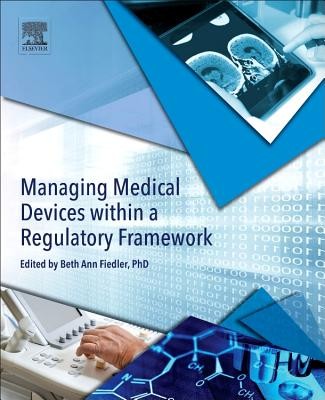
- We will send in 10–14 business days.
- Publisher: Elsevier
- ISBN-10: 012804179X
- ISBN-13: 9780128041796
- Format: 19.1 x 23.4 x 2.3 cm, softcover
- Language: English
- SAVE -10% with code: EXTRA
Managing Medical Devices Within a Regulatory Framework (e-book) (used book) | bookbook.eu
Reviews
Description
Managing Medical Devices within a Regulatory Framework helps administrators, designers, manufacturers, clinical engineers, and biomedical support staff to navigate worldwide regulation, carefully consider the parameters for medical equipment patient safety, anticipate problems with equipment, and efficiently manage medical device acquisition budgets throughout the total product life cycle.
This contributed book contains perspectives from industry professionals and academics providing a comprehensive look at health technology management (HTM) best practices for medical records management, interoperability between and among devices outside of healthcare, and the dynamics of implementation of new devices. Various chapters advise on how to achieve patient confidentiality compliance for medical devices and their software, discuss legal issues surrounding device use in the hospital environment of care, the impact of device failures on patient safety, methods to advance skillsets for HTM professionals, and resources to assess digital technology. The authors bring forth relevant challenges and demonstrate how management can foster increased clinical and non-clinical collaboration to enhance patient outcomes and the bottom line by translating the regulatory impact on operational requirements.
EXTRA 10 % discount with code: EXTRA
The promotion ends in 21d.00:06:35
The discount code is valid when purchasing from 10 €. Discounts do not stack.
- Publisher: Elsevier
- ISBN-10: 012804179X
- ISBN-13: 9780128041796
- Format: 19.1 x 23.4 x 2.3 cm, softcover
- Language: English English
Managing Medical Devices within a Regulatory Framework helps administrators, designers, manufacturers, clinical engineers, and biomedical support staff to navigate worldwide regulation, carefully consider the parameters for medical equipment patient safety, anticipate problems with equipment, and efficiently manage medical device acquisition budgets throughout the total product life cycle.
This contributed book contains perspectives from industry professionals and academics providing a comprehensive look at health technology management (HTM) best practices for medical records management, interoperability between and among devices outside of healthcare, and the dynamics of implementation of new devices. Various chapters advise on how to achieve patient confidentiality compliance for medical devices and their software, discuss legal issues surrounding device use in the hospital environment of care, the impact of device failures on patient safety, methods to advance skillsets for HTM professionals, and resources to assess digital technology. The authors bring forth relevant challenges and demonstrate how management can foster increased clinical and non-clinical collaboration to enhance patient outcomes and the bottom line by translating the regulatory impact on operational requirements.


Reviews